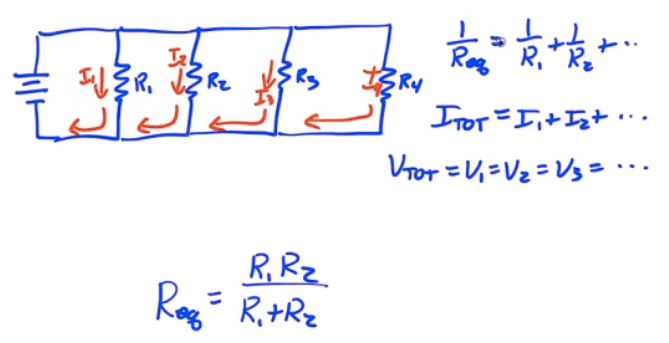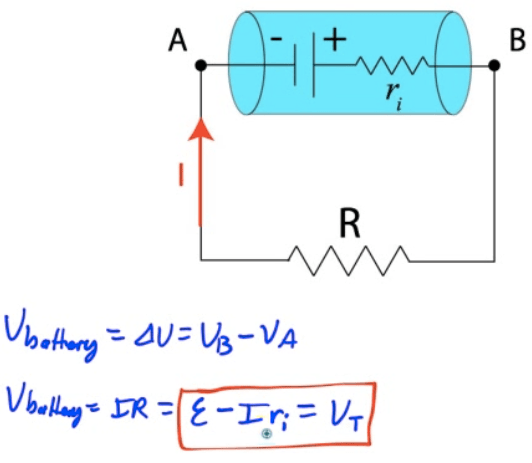Parallel Circuits
Parallel Circuits have multiple current paths
Removal of a circuit element may allow other branches of the circuit to continue operating

Combination Series-Parallel Circuits
A circuit doesn't have to be completely serial or parallel
First, look for portions of the circuit with parallel elements.
Replace parallel resistors with an equivalent single resistor
Work back to original circuit using KCL and KVL until you know the current, voltage, and resistance of each individual circuit element
Often times will lead to systems of equations to solve
Example 1: Two Voltage Sources
Find the current flowing through R3 if R3 has a value of 6 ohms. What is the power dissipated in R3?

Batteries
A cell or battery (combination of cells) provides a potential difference, oftentimes referred to as an electromotive force or emf.
A battery can be thought of as a pump for charge, raising it from a lower potential to a higher potential
Ideal batteries have no resistance

In real batteries, the terminal voltage is slightly lower than the battery's emf

Ideal Battery

Real Battery
